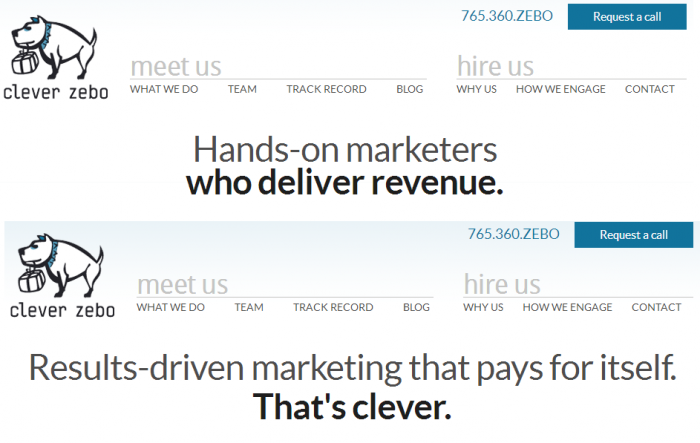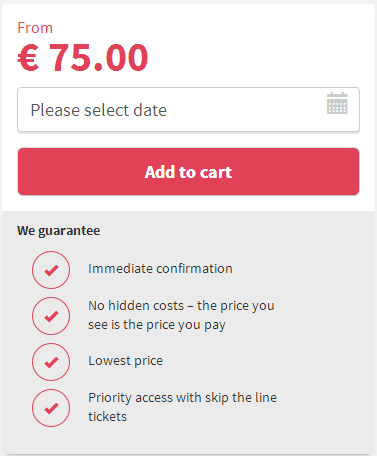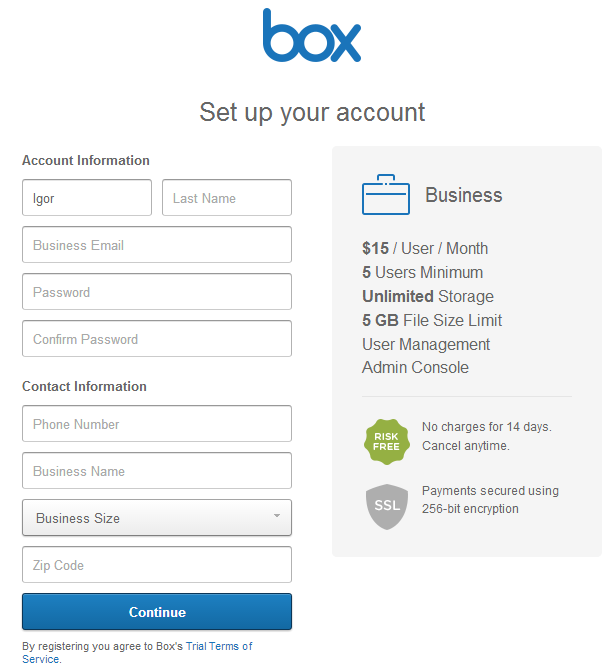B2B/non-ecommerce marketers and their potential customers have a problem.
The marketer is responsible for driving revenue, but often there’s a significant delay between when someone shows interest in a product/service and when a deal gets signed, which is why many marketers fall back to the performance metric of leads generated.
Potential customers need someone to pitch in but have minimal extra time because they’re so busy trying to cover the gap they’re looking to hire for.Read more…
Continue reading >B2B/non-ecommerce marketers and their potential customers have a problem.
The marketer is responsible for driving revenue, but often there’s a significant delay between when someone shows interest in a product/service and when a deal gets signed, which is why many marketers fall back to the performance metric of leads generated.
Potential customers need someone to pitch in but have minimal extra time because they’re so busy trying to cover the gap they’re looking to hire for. They need to quickly evaluate many highly complex solutions, often without an objective point of reference to guide the process.
This blog post evaluates the “free consult” as a solution for helping marketers set up qualified conversations for their sales people and potential customers to quickly but effectively determine whether this is the right solution. While, yes, there are customers who know what they want, call the company number and place an order, in working with hundreds of lead-gen-driven sales processes, my take on the data is that more complex sales processes can’t be reduced to an e-commerce transaction and require a live conversations driven by both parties.
Marketers have several tools in their arsenal to facilitate this conversation — we’ll focus mainly on the free consult but want to set the landscape.
The marketer’s lead generation toolkit
1. List a phone number. While only ready buyers, people selling something or customers with an issue tend to call a listed number, it’s good form to make your people easily and quickly available.
2. Provide a contact form. Not everyone is a phone person, but there are folks who will get a conversation going via a contact form and then email leading up to a live conversation.
3. Have a social media presence you monitor. Yes, people will tweet at or LinkedIn message you. It’s one of my favorite ways of connecting with new people and companies.
4. Offer a free content resource such as white paper or webinar in exchange for contact info. #1-3 are communication methods for someone looking to buy. If you create valuable resources, people may genuinely just be looking for good information. How to uncover which of these leads are real buyers, or get them to the point where they are, is one of the great challenges of modern marketing. Nonetheless, this can be an incredibly powerful revenue generation methodology.
5. Newsletter subscription. Like #4 but less information has to be given by the prospect.
6. Offer a free trial. This is an incredibly powerful conversion tool for companies that offer a try-able product or service, but there will be a significant number of participants who are just researching.
7. Offer a free consult.
Many savvy people immediately become cautious when they see the words “free” and “consult” joined together. Nothing is free in this world. At a minimum, having a conversation costs us time, which is for many of us is our most precious resource. More importantly, if we’re reaching out to an expert for help, we’re likely to take that person’s advice. Thus, even though it may be “free” in the financial sense, there’s a lot at stake for a prospect entering a free consult.
The 7 golden rules of free consults
If a marketer/sales person/company cares about you, the prospect, they’ll do the following to ensure your free consult is valuable.
1. Ask what you’re looking for AND give you that as quickly as possible or say sorry I can’t offer that.
2. Ask you questions that diagnose your problem not just qualify you as a buyer.
3. Offer as complete a solution as quickly as possible. I believe strongly that ideas, concepts and theories are a public resource. I only want to be paid for helping you implement the thinking, not for making you aware of it.
4. Answer questions directly and transparently. There’s nothing worse than asking someone what something costs, how long it takes or who else uses it and getting a round-about answer.
5. Get to the point quickly.
6. Ask: “Is this what you were looking for, and how else can I be helpful?”
7. Always come from the perspective that it’s better to give extreme value regardless of compensation.
Personally, I’m extremely cautious about booking free consults. I try to do as much research only as possible first and use the consult as a way of answering questions that I’ve found to have less clear-cut answers. I also use the consult as a way of evaluating whether this is someone or a company I want to do business with. When I get the vibe this is someone who genuinely wants to be helpful, I keep going through their sales process. As soon as I feel like I’m being worked, I bail.
When it’s me giving the free consult, I work as hard as possible to do a good job with the 7 Golden Rules of Free Consults. Regardless of whether someone becomes a customer, I want them to feel that their time has been well spent and they’ve gotten real value.
If you want a free consult on your conversion optimization/online marketing program, reach out to me to set up a time for a free consult.
...Read less


